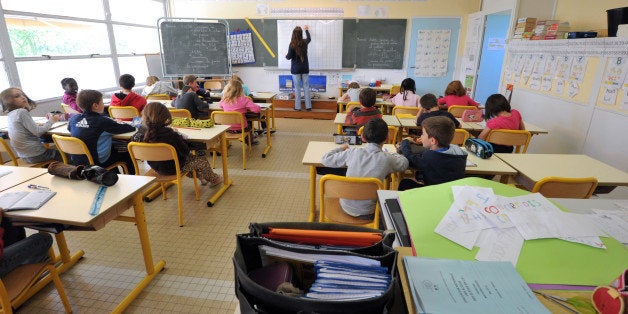
When the U.S. Census Bureau released a report last week breaking down per pupil spending across the United States by school district, the spending figure for DCPS (the nation-leading over $18,000 per pupil per year) grabbed headlines both inside and outside the Beltway. Tipped off by a blog post by Andrew Coulson at the Cato Institute, I went digging through the report and similarly found that even the $18,000 figure was a huge under-reporting of the total spending per pupil in DCPS.
Table 15 (on pg. 31) in the report lists both the enrollment and the total expenditure of DCPS. The district enrolled 43,866 students at a total cost of $1.196 billion. Simply dividing one by the other yielded a true per pupil expenditure of $27,263.
Interestingly, Appendix B of the report (the "notes relating to finance data") included this note in the entry for DCPS, clearly recognizing that there has been something fishy in past calculations of expenditures:
For FY 2010, the District of Columbia made significant changes to its financial reporting methodology to improve the accuracy and quality of their data... These factors contributed to a significant increase in local revenue, expenditure, and per pupil current spending in the District of Columbia from FY 2009 to FY 2010.
Obfuscation notwithstanding, I decided to try to put this huge figure in perspective by searching out a couple of cities similar to DC to see if their spending was anywhere near $27,000. It was not.
Atlanta and Cleveland (see Table 1) are of similar size, have similar numbers of students from low-income families, and perform about the same on the NAEP test. However, both of those cities spend significantly smaller amounts of money to educate their students. How is this happening?
The factors are complicated, but a first glance at staffing patterns tells some of the story (Table 2). Per student, DC has the most teachers, the most instructional aides, the most instructional coordinators, the second most administrators, and the second most administrative support staff.
DC also pays their teachers more, with a starting salary for a first year teacher with a bachelor's degree set at $51,539 a year and a teacher with a Master's degree and 21 years of experience earning $100,839 per year. In Atlanta (according to the district's website), it's $44,312 and $69,856; in Cleveland (according to its union contract) it's $36,322 and $70,916. Note: all of these figures are simply salary, these do not include benefits.
Now, it is absolutely fair to say that the cost of living, and the cost of doing business, is greater in DC than it is in either of these cities. And, if these spending figures were only a couple thousand dollars off, I think we could easily chalk up the gaps to that factor. However, Atlanta gets slightly better test scores with slightly poorer students at 60 percent of the cost of DCPS and Cleveland does about the same with slightly less poor students at 68 percent of the cost.
DCPS has made several significant positive strides in recent years. But until it gets its spending under control, all of these positive developments are going to get lost in its perception as a bloated, ineffective bureaucracy.
Table 1: Descriptive Information on DC, Atlanta, and Cleveland

Table 2: Staff to Student Ratios in DC, Atlanta, and Cleveland
